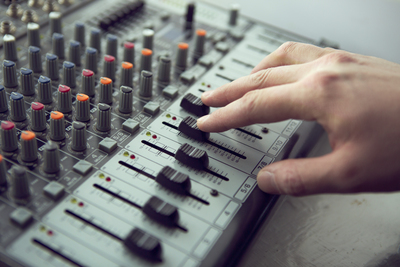
Digital Recordings… and the Death of the Court Reporter?
Let’s dispense with this false dichotomy once and for all. There is no man vs. machine argument here. Courts and lawyers are not engaged in some epic battle to save money or save the integrity of the record. This simplistic “either/or” argument is both inaccurate and unproductive.
In March of 2016, two interesting posts came up on social media. The first was a blog written by an attorney in California, John Harding (The Importance of Court Reporters and Court Transcripts). Harding laments the decline in the number of court reporters in the California courts. He describes an environment, which is now commonly found around the country, where attorneys and litigants are forced to either pay to bring their own court reporter to capture an adequate record, or live with a “poor quality recording.” He states that “The elimination of court reporters is yet another shameful example of how politicians have compromised the integrity and effectiveness of the courts.”
And, how about this one from Yakima County, Washington (Judge rips Yakima County Clerk over staffing issues). This article from the Yakima Herald describes tension between the Clerk’s office and the Superior Court judges. The county replaced court reporters with digital recording and entered into an agreement with the clerks to “simply turn on an automated recording system that replaced stenographers.” Nobody seems happy with the arrangement – not the judges, not the clerks, and probably not the attorneys and litigants. But the county says it is saving $400,000 per year, so…
I am not saying these stories aren’t true. I sympathize with both Harding and the judges of Yakima County. But one should not fall for the false argument that there is a simple choice between having a qualified court reporter and having poor audio recordings. These inferior outcomes are the result of ineffective deployment strategies, not poor technology choices.
For decades, independent groups have studied the efficacy of digital recording as a method of creating court records. All of those studies have found that, properly managed, digital recording can provide a timely, accurate, and cost-effective recording of proceedings, and that transcripts can be produced quickly and accurately from high-quality recordings. But the operative words here are “properly managed,” something that too many court systems fail to do.
If a court chooses to place unmonitored recording systems in low-level courts to save money, they do so at their own risk. Perhaps the savings justifies the problems created by poor or missing recordings. However, a successful implementation of digital recording requires careful management by qualified individuals trained to capture a complete and accurate court record. Organizations such as the American Association of Electronic Reporters and Transcribers (AAERT) have certification programs for both digital reporters and transcribers. Despite the false narrative created by the “man vs machine” argument, AAERT has long advocated the need for qualified professionals to manage the reporting process.
In the 1970s, we saw the first ATMs appear. The convenience factor to a certain group of customers was clear and they quickly adopted the machine. For many, however, the loss of the personal connection with the bank teller was concerning. The savings to the banks was unquestionable, and some of the larger institutions got in trouble for trying to charge an additional fee for customers to use a live bank teller. In the end, mass adoption of the ATM actually took much longer than most of us remember.
Obviously, the ATM was destined to have a big impact on bank tellers. In 1980, the ATM was held up as the shining example of how technology steals jobs. Bank tellers, of course, did not go away, we still see them working in banks today. But surely there are far fewer of them, right? Wrong!

In a terrific article from March, 2015 on the International Monetary Fund site (imf.org), (James Bessen), from Boston University School of Law, describes some of the common misconceptions about technology and job elimination. In (Toil and Technology), Bessen discusses the impact of the ATM on bank teller employment between 1970 and 2010.
It turns out that the banks did, in fact, save a lot of money by installing the new technology. As Bessen describes: “Thanks to the ATM, the number of tellers required to operate a branch office in the average urban market fell from 20 to 13 between 1988 and 2004. But banks responded by opening more branches to compete for greater market share. Bank branches in urban areas increased 43 percent. Fewer tellers were required for each branch, but more branches meant that teller jobs did not disappear.”
We hear stories of how technology has replaced jobs for centuries. The fireman on the train, or the telephone switchboard operator, for example. However, the reality is technology changes the tasks people perform, but rarely does it eliminate a person from the process.
The transition from stenography is no different. The “recording” of the proceedings become automated, but the most valuable skills of the court reporter are still required and the job will live on. Managing the record of legal proceedings requires skill, knowledge, and a dedication to the sanctity of an accurate recording and transcript.
Accurate court records and timely transcripts are inevitably important. Finding the balance between employed professionals to manage all digital recordings instead of relying solely on the timely stenographic methods will help legal professionals get the paperwork they need in a timely fashion. Let’s stop with the simplistic “man vs. machine” argument; it simply slows the inevitable transition and creates problems for everyone along the way.
